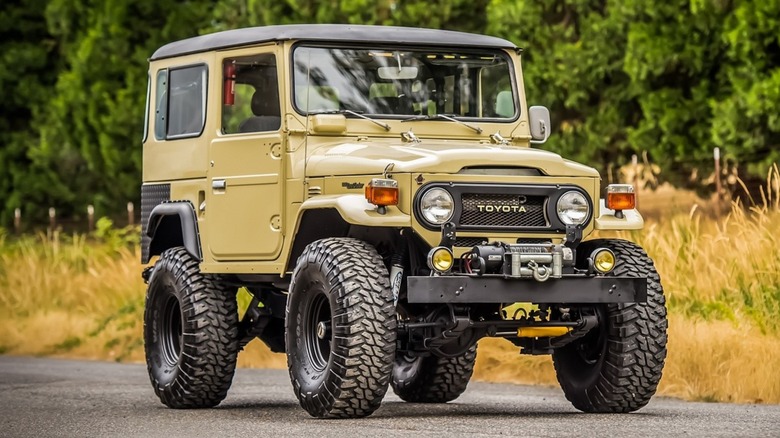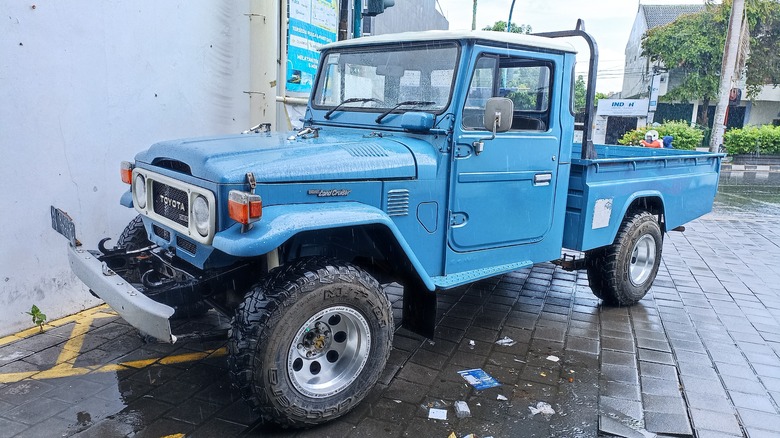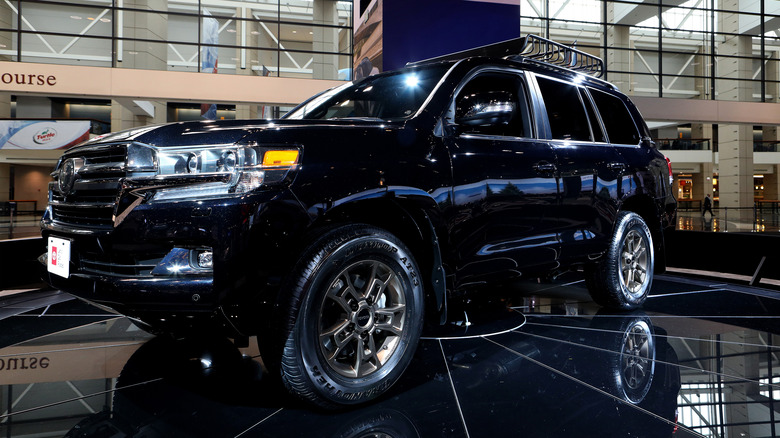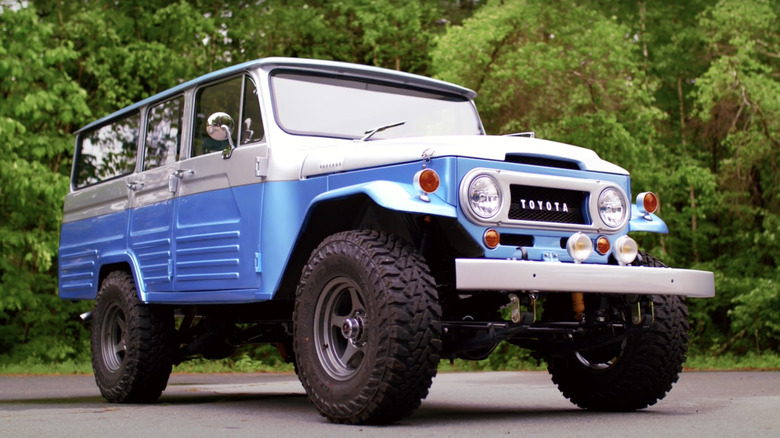3 Of The Rarest Toyota Land Cruisers Ever Made
The original version of the Toyota Land Cruiser was released almost 75 years ago and has continued to be one of the most popular four-wheel-drive vehicles worldwide. The Land Cruiser's sturdy design gives it strong off-road capability and durability, and the 2024 Land Cruiser marked its return to the U.S. market after a three-year hiatus. The origins of the Land Cruiser stretch back to early World War II, when the Japanese military asked Toyota to produce a vehicle similar to a U.S. Army Willys Bantam GP they found abandoned. Toyota reverse-engineered the Willys Jeep, producing a utility vehicle named the AK. Further development on the AK led to the production model AK10, which is considered to be the ancestor of the Land Cruiser.
By 1950, during the outbreak of the Korean War, the U.S. government enlisted Toyota to manufacture 1,000 vehicles using the Willys Jeep as a template. Utilizing the insights gained during the production of the AK10, Toyota engineers created the Toyota Jeep BJ in 1951, which was bigger and more powerful than the Jeep it was modeled on. During its early run, Willys filed a trademark violation against Toyota because of its use of the Jeep name. In response, Toyota dropped the name Jeep and renamed the vehicle the Land Cruiser in 1954. This was the brainstorm of technical director Hanji Umehara and reflected its ability to tackle difficult terrain without much effort. Today, buying a used Land Cruiser starts with choosing between the various models in Light Duty, Heavy Duty, and Station Wagon formats. In 2019, Toyota announced that sales of the Land Cruiser had reached the 10 million mark. Despite these prolific production numbers, some models of the Land Cruiser are rare because of their limited manufacturing cycle.
J43 and J45 pickups
With its familiar silhouette and long production run, the Toyota Land Cruiser FJ40 is one of the most recognizable sport utility vehicles ever made. Produced from 1960 to 2001, the FJ40 spawned several versions, including a Brazilian-made model called the Bandeirante. The FJ40 was also made in J43 and J45 variants with pickup-style bodies.
The J43 was a little longer than the original FJ40 and accepted hard and soft tops. Available only in selected markets until 1984, the medium-wheelbase J43 is less common than the FJ40 with enclosed rear and folding rear seats. Along with the J43, Toyota released the long-wheelbase J45. The J45 was also available in the station wagon body style, and the rare pickup configuration was available with a gasoline engine (FJ45) or diesel powerplant (BJ45). J45 pickups were manufactured from 1963 through 1986, and it is estimated that less than 1,200 were sold in the United States.
2020 heritage edition
Available only in black metallic or blizzard pearl, the limited-edition 2021 Land Cruiser Heritage Edition is another rare Land Cruiser that echoes the aesthetics of its predecessors. It sports a few exterior features that identify its special status, including retro badges, bronze BBS wheels, and a Yakima roof rack. Other distinguishing features of this model were an upgraded interior and lack of running boards or third-row seating. The lower trim was also reconfigured to give the model more ground clearance.
Despite being relatively new, the Heritage Edition has become an instant classic in the Land Cruiser lineup. By continuing to keep the characteristics that made Land Cruisers a favorite among SUV fans and incorporating the latest technology and features of contemporary Toyota SUVs, Toyota made sure the Heritage Edition was worthy of its name. It was more expensive than the standard Land Cruiser at nearly $90,000, and only 1,200 units were planned for sale in the U.S. market. Five years after its release, Heritage Edition Land Cruisers are hard to find on the secondhand market and often fetch at or above the original retail price.
FJ45 LV Wagon
Because of the Land Cruiser's popularity and demand in the United States in the 1960s, Toyota began to develop a new, specialized version aimed at replacing the utilitarian beast with a more recreational, family-oriented vehicle. Toyota hired Gifu Auto Body coachbuilders to craft a longer and wider station wagon body. The FJ 45LV was produced from 1960 to 1967 and marked a departure from the standard FJ40. Its body panels had to be reinforced with ribs and ridges to ensure it was strong enough when fitted on the longer chassis.
Perhaps due to its unorthodox appearance, sales of the FJ45 LV were not as good as Toyota had expected and the model was cancelled after 1967. With only 5,000 examples built and only 1,000 left-hand drive versions exported to the United States, the FJ 45LV station wagon is among the rarest of all Toyota Land Cruisers made. Despite the disappointing sales numbers, the lessons learned from the FJ45LV paved the way for Toyota to achieve later success with the Land Cruiser. Shortly after its cancellation, Toyota decided to form a separate line for station wagon models, eventually birthing the now-pervasive and popular Series 60, Series 70 and Land Cruiser Prado.



